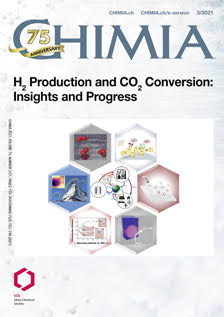Organic Semiconductors as Photoanodes for Solar-driven Photoelectrochemical Fuel Production
DOI:
https://doi.org/10.2533/chimia.2021.169PMID:
33766199Keywords:
Conjugated polymers, Dye sensitized, Hydrogen, Oxygen evolution reaction, Water splittingAbstract
The direct conversion of solar energy into chemical fuels, such as hydrogen, via photoelectrochemical (PEC) water splitting requires the efficient oxidation of water at a photoanode. While transition metal oxides have shown a significant success as photoanodes, their intrinsic limitations make them the bottleneck of PEC water splitting. Recently, initial research reports suggest that organic semiconductors (OSCs) could be possible alternative photoanode materials in both dye-sensitized and thin film photoelectrode configurations. Herein we review the progress to date, with a focus on the major issues faced by OSCs: stability and low photocurrent density in aqueous photoelectrochemical conditions. An outlook to the future of OSCs in photoelectrochemistry is also given.Downloads
Published
2021-03-31
Issue
Section
Scientific Articles
License
Copyright (c) 2021 Arvindh Sekar, Kevin Sivula

This work is licensed under a Creative Commons Attribution 4.0 International License.
How to Cite
[1]
Chimia 2021, 75, 169, DOI: 10.2533/chimia.2021.169.







